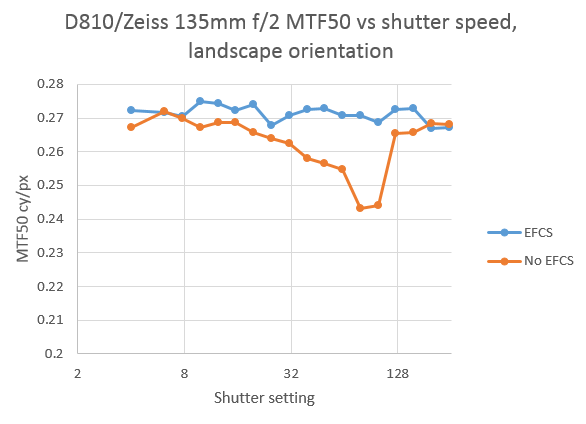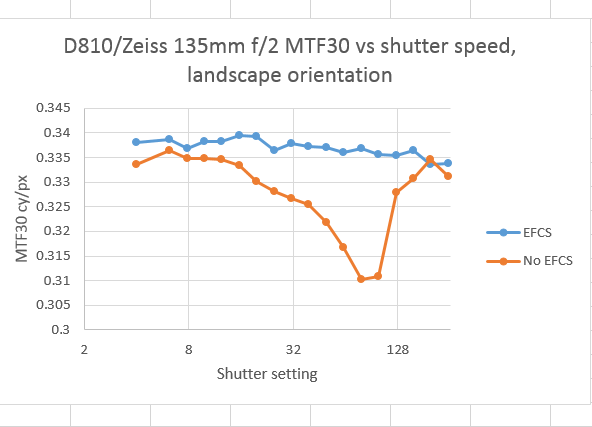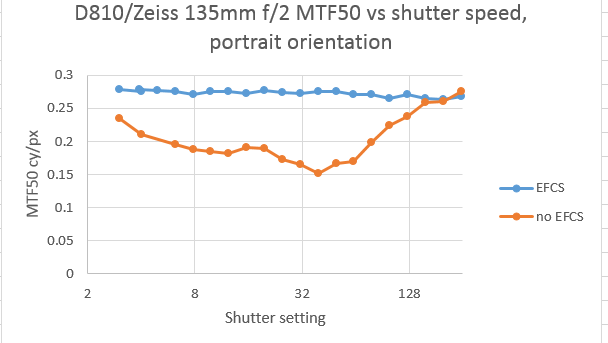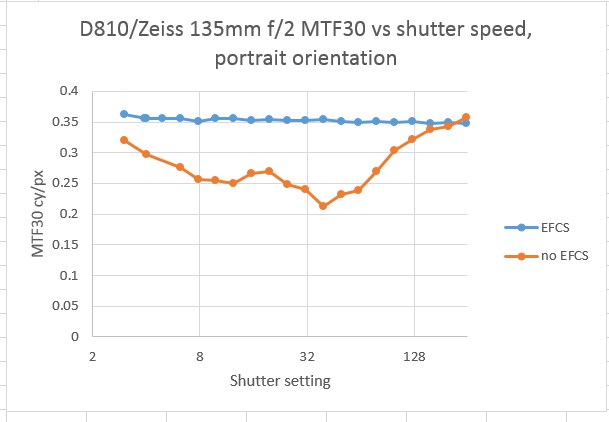I mounted a Zeiss 135mm f/2 APO-Sonnar on the D810 and repeated the tests of the previous two posts.
Here’s what happened, first in landscape orientation, measuring the edges perpendicular to the shutter motion:
And in portrait orientation, also measuring the edges perpendicular to the shutter motion:
EFCS really earns its keep here.
I would expect an even wider divergence with longer lenses.




Hi Jim,
I really like your article. Interesting!
> I would expect an even wider divergence with longer lenses.
It isn’t as easy as this. The moving shutter creates a rotational acceleration around the common center of gravity of body and lens. Simply assuming the center of gravity moves out along the optical axis proportionally to focal length makes the effects of focal length cancel each other out. In practice, it is rather complicated and in many cases, wide angle lenses are worst.
Moreover, it depends on how and where you hold the camera (handheld, tripod etc.). I believe this to be the reason of differences between horizontal and vertical body orientation.
For a similiar analysis, cf. here: http://www.falklumo.com/lumolabs/articles/k7shutter/index.html
Kind regards,
Falk
Thanks, Falk. That’s impressive work you did!
Part of the reason I said what I did about longer lenses is that lenses much above 135mm usually need to be mounted to the tripod with a lens collar, which makes the mounting arrangement less stiff with respect to rotation, which is usually a bigger problem than displacement.
I looked at the problem a while ago at the hand-waving level:
http://blog.kasson.com/?p=4581
http://blog.kasson.com/?p=4590
http://blog.kasson.com/?p=4609
In the last link above, there’s a link to some work the Mike Collete did that you may find interesting.
I’d be interested in your comments.
Also, you might want to take a look at some work I did making images of oscilloscope traces:
http://blog.kasson.com/?p=4674
My main problem was getting the phosphor dot size small enough in the image. I ended up using a folded light path. I also never did figure out how to get the ‘scope dot brightness the same from run to run, unless I didn’t use it for anything else in between.
Jim
This is a wonderful “study” if you will, but it’s very misleading. Why?
There is this thing called Mirror Up Mode….
On the D810, EFCS only works in MUP mode.